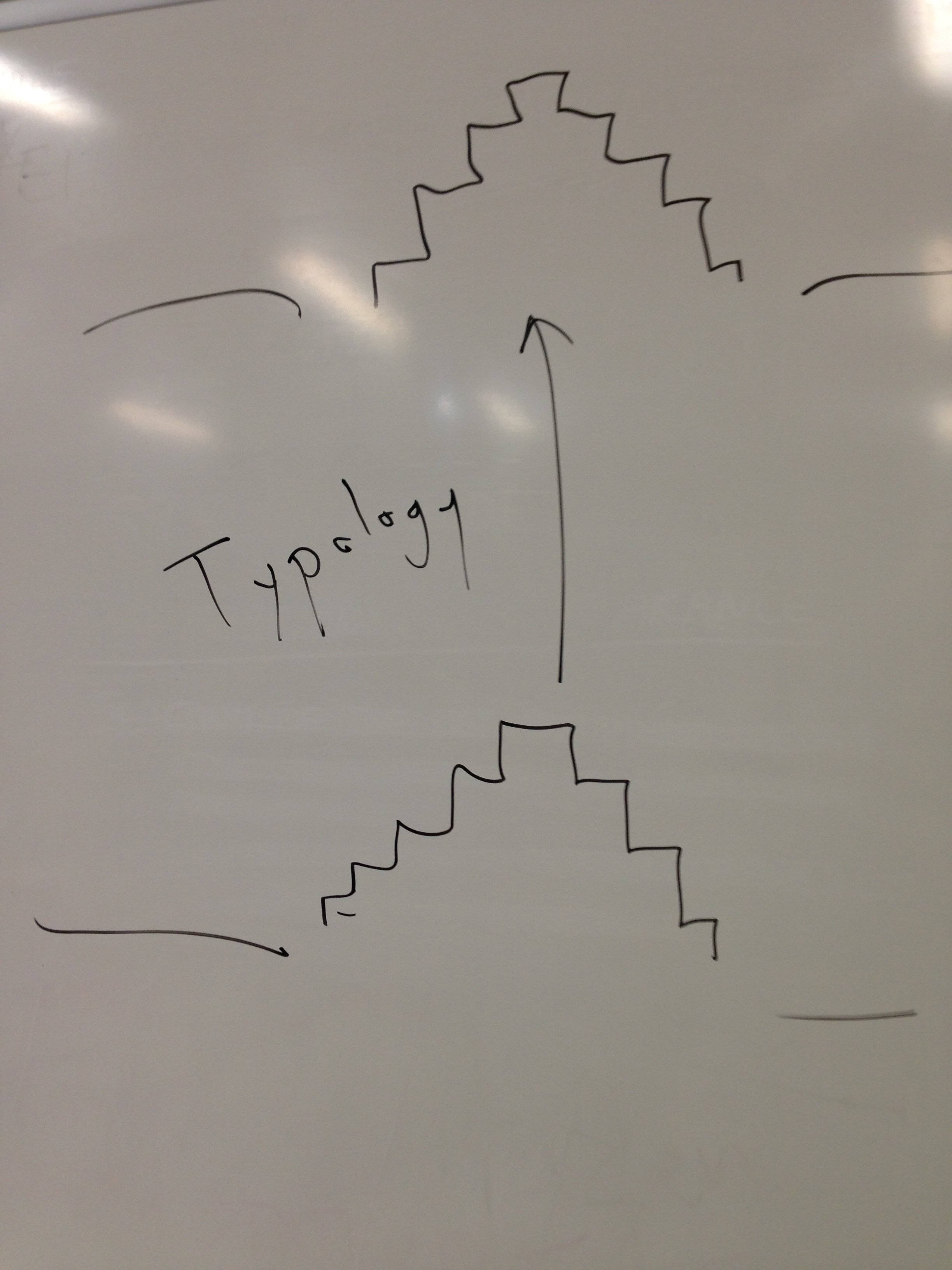 Home Page
Home Page
- Lecture.mp3
- Listen in iTunes
- Listen on Stitcher
-
Soldiers climbing a reconsructed ziggurat
Typology ó the belief that things from the past correlate with things in the present, or that things on the earth correlate with things in heaven.

Gilgamesh with a lion. Nice kitty.
The tragic arc in Gilgamesh's life.
The taming of Enkidu.
Allegory. The dreams
in the story are interpreted allegorically. Allegory is
when every part of a narrative has a corresponding symbolic
level. Gilgamesh and Genesis shows that allegory is one of
our most ancient modes of thinking and interpreting. And
now for a digression on allegory, since it is one of the
earliest forms of interpreting narrative and literature.
-Allegory ~ is the reading of documents on several levels. It was used by church in middle ages, and still is popular. Allegory was used by Greeks because their gods' immorality was embarrassing. (Example - Zeus sometimes turned himself into an animal and raped women. Allegorical interpretations of these myths thus arose). Also, they interpreted their heroes allegorically as embodying virtues and vices. Allegory was later adopted by Christians.
The medieval church expressed its understanding of allegory in the following distich:
- Littera gesta docet;
- quod credas allegoria;
- quid agas moralia;
- quo tendas anagogia.
Translation:
- The letter teaches the events;
- what you believe is allegory;
- what you are should do is the moral (tropological) sense;
- where you are going (after you die) is anagogical.
The verse that the church used to justify this method of
interpretation is 2 Corinthians 3:6:
- The Bible records God's action in history (the letter), and it is the task of the interpreter to discern the relation between what is written there and what has come about (and will come about) because of what happened.
- The three latter senses show how this is best done, by relating the text to what we believe (allegory),
- to how we are to live (the moral sense),
- and to what we hope for (the anagogical sense)." (Interpreting the Bible: Three Views)
Jerusalem in the four-fold allegorical senses:
- Jerusalem, e.g., according to its literal sense, is the Holy City;
- taken allegorically, it denotes the Church Militant;
- understood tropologically, it stands for the just soul;
- finally, in its anagogical sense, it stands for the Church Triumphant.
In Pilgrims Progress:
- Literal - journey from the City of Destruction to Celestial City despite great perils.
- Allegorical - the progress of any Christian from Baptism through trials to heaven.
- Moral - courage, trust, effort ~ to have these there characteristics.
- Anagogic - Godís providence and care for us. Worthiness of goal - to get to city.